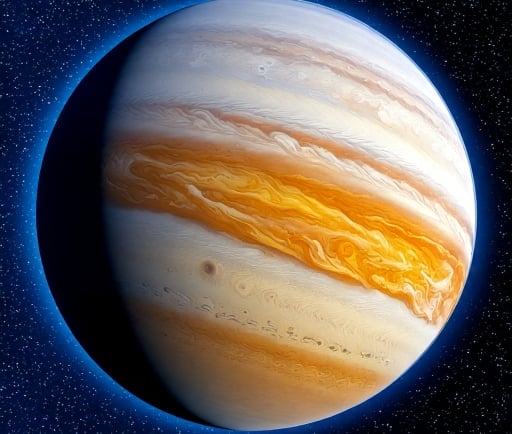The Rho Coronae Borealis B: The Gas Giant Orbiting a Yellow Dwarf


Introduction to Rho Coronae Borealis B
Rho Coronae Borealis B is an intriguing gas giant exoplanet that has garnered attention in the astronomical community. As it orbits a yellow dwarf star, its unique features and characteristics offer valuable insights into the study of planetary systems beyond our own. With a mass size that is approximately 1.093 times that of Jupiter, Rho Coronae Borealis B presents an intriguing opportunity to explore the dynamics of gas giants.
Circular Orbit and Orbital Period
This exoplanet completes its orbit in an impressive duration of just 39.8 days. The relatively short orbital period indicates a close proximity to its host star, which significantly influences its atmospheric and geological conditions. This orbital behavior is crucial for understanding the planet's climate, potential weather patterns, and the possibility of studying its atmospheric composition.
A Closer Look at Its Mass and Characteristics
With a mass exceeding that of Jupiter, Rho Coronae Borealis B challenges our understanding of gas giants. The planet's dimensions and gravitational effects on its surroundings can offer clues about the architecture of similar systems. Its mass facilitates comparisons with other known exoplanets, helping researchers piece together the formation and evolution of gas giants. Furthermore, studying the gravitational interactions between Rho Coronae Borealis B and its host star can lead to potential discoveries about the magnetic fields and atmospheres of exoplanets.
Significance in Exoplanet Studies
Rho Coronae Borealis B's relationship with its yellow dwarf host star exemplifies the complexity of exoplanetary systems. The planet's mass and proximity provide a unique opportunity for astronomers to apply various observational techniques, such as spectroscopy and imaging, to gain deeper insights into its atmosphere. This could potentially include studying its cloud formations, weather events, and temperature variations.
Conclusion: The Future of Rho Coronae Borealis B Research
As exploration of Rho Coronae Borealis B continues, it will likely play a pivotal role in the scientific understanding of gas giants. Its specific characteristics can help answer fundamental questions about planetary formation, climatic conditions on distant worlds, and the potential for life beyond Earth. Continued observations and research will contribute to an ever-growing knowledge base, paving the way for more discoveries in the field of exoplanet studies.
